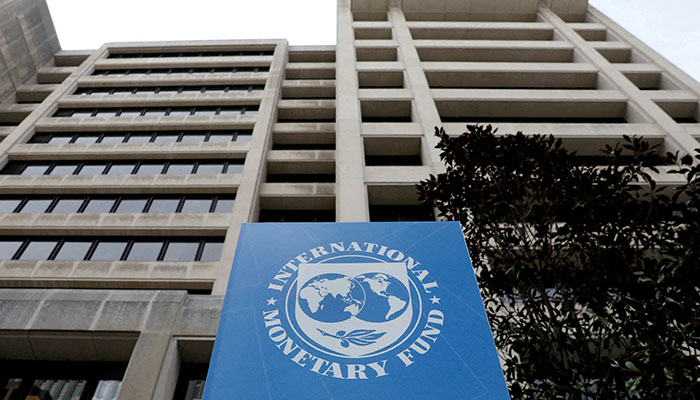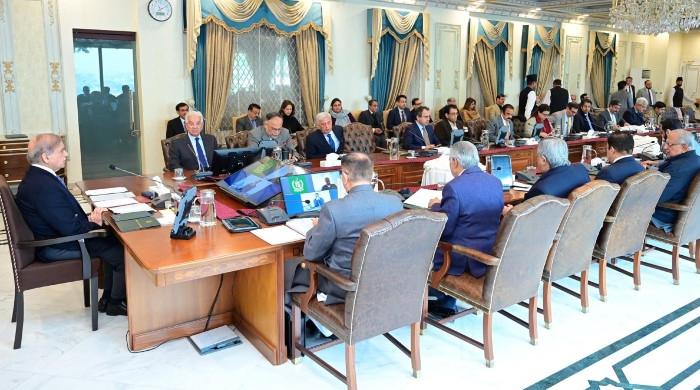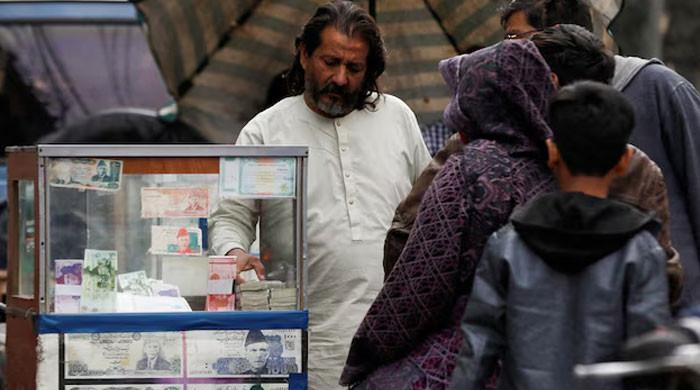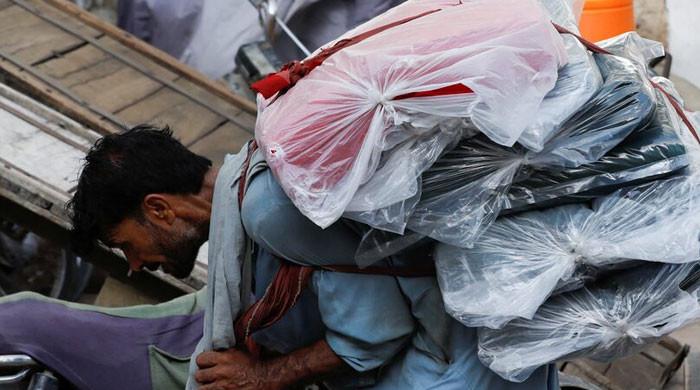The IMF's failed prescription
Pakistan remains mired in inflation, debt, stagnation despite multiple bailouts
November 15, 2024

In September 2024, the International Monetary Fund (IMF) approved a $7 billion bailout package for Pakistan. Yet just four months ahead of the schedule, a surprise IMF mission arrived in Islamabad on November 11 to assess Pakistan’s performance under the agreement. The early visit has raised questions about the IMF’s strategy, especially considering the improvement in key macro indicators.
For the first time in 24 years, Pakistan posted a budget surplus of Rs1.7 trillion (1.4% of GDP) in the first quarter of the fiscal year. This was driven by a record-high central bank profit of Rs2.5 trillion and a primary surplus of Rs3 trillion (2.4% of GDP).
These results are significant, yet the IMF’s insistence on imposing quantitative conditions, such as requiring 40% growth in tax revenues this year without broadening the tax net or introducing governance reforms highlights the tension between short-term fixes and long-term solutions.
Admittedly, Pakistan’s fiscal health requires a lot of work. Though tax collection in the first four months of FY25 fell short by Rs190 billion (5.23%), a 25% growth in tax receipts, in line with a modest inflation forecast of 9.5% for FY25 – down from 23.4% last year – represents progress.
Also, interest payments on Pakistan’s burgeoning debt, which hit a record Rs8.25 trillion in FY24, are expected to decline sharply as the central bank cut its policy rate by 700 basis points. This could provide much-needed fiscal relief.
The current account deficit also improved, falling to just $98 million in the first quarter of FY25, compared to $1.24 billion in the same period last year, largely due to a 38.7% rise in remittances. This improving trend raises a fundamental question: why is the IMF anxious to assess Pakistan’s performance so soon after the bailout approval?
The answer lies in the IMF’s entrenched reform agenda, which has dominated Pakistan’s economic policy for decades. Despite multiple bailouts, Pakistan remains mired in inflation, debt, and stagnation. IMF-imposed conditions like tax reforms, fiscal discipline, and cuts to subsidies have not yielded long-term benefits.
Instead, they have triggered short-term fixes, such as currency devaluation, additional tax burden on the existing taxpayers’ base and subsidy cuts, which fail to address deeper structural issues like low industrial growth, inadequate social services, and persistent inequality.
Since the 1980s, Pakistan has repeatedly sought IMF assistance, believing each new agreement would unlock the solution to its economic woes. Yet, despite 25 agreements with the IMF, the country continues to face recurring crises.
The IMF’s focus on fiscal austerity often exacerbates Pakistan’s vulnerabilities. Austerity measures, while aiming to reduce deficits and stabilise the economy, usually do so at the expense of long-term growth. Cuts to public sector spending have only deepened inequality and poverty, while key sectors like education, healthcare, and infrastructure remain underdeveloped amid steady deindustrialisation.
The IMF’s "stabilisation-first" model has failed to stimulate sustainable growth. Fiscal discipline, currency devaluation, and market-based reforms may bring short-term stability, but they fail to address the underlying structural weaknesses in developing economies like Pakistan. Austerity has led to a growing reliance on external borrowing, rather than fostering the industrialisation and human capital investment needed for lasting growth.
Pakistan’s repeated currency devaluations, recommended by the IMF, have not delivered export-driven growth. Despite a cheaper rupee, exports have stagnated, foreign reserves remain low, and structural inflation continues to erode the purchasing power of ordinary Pakistanis.
Pakistan is not alone in its struggles with the IMF’s prescriptions. Countries like Greece, Argentina, and Egypt have experienced severe economic pain under similar IMF-backed reforms. In each case, the IMF’s emphasis on short-term fiscal stability failed to address deeper economic weaknesses, such as underdeveloped industrial sectors, inadequate social services, and rising inequality.
The IMF’s approach has consistently ignored the unique political, economic, and social contexts of each country. For Pakistan to break free from the cycle of IMF bailouts, it must shift its focus to industrial development, human capital, and long-term infrastructure investment. Domestic debt restructuring is also necessary to reduce reliance on external borrowing. Instead of following the IMF’s austerity-first model, Pakistan should prioritise export-oriented industrialisation, improve public services, and invest in its people – especially its youth.
The IMF itself must reconsider its one-size-fits-all approach. Its current model treats all countries the same, failing to account for local conditions and unique economic challenges. A more flexible, context-specific strategy is needed. The IMF should support developing nations in building economies that are self-sustaining, rather than perpetually reliant on bailouts and austerity measures.
Pakistan’s economic challenges are deep-rooted, and the IMF’s policies have only deepened inequality, poverty, and debt. It is time for a fundamental rethinking of both Pakistan’s economic strategy and the role of international financial institutions. Until the IMF adopts a more tailoured approach, countries like Pakistan will remain stuck in a cycle of crisis and dependency.
Disclaimer: The viewpoints expressed in this piece are the writer's own and don't necessarily reflect Geo.tv's editorial policy.
The writer is former head of Citigroup’s emerging markets investments and author of "The Gathering Storm".
Originally published in The News











